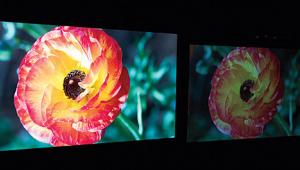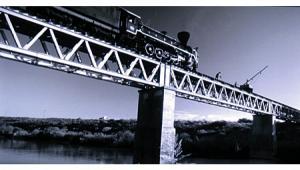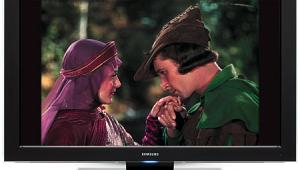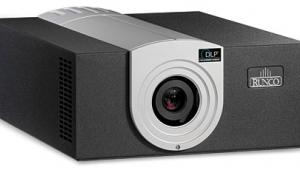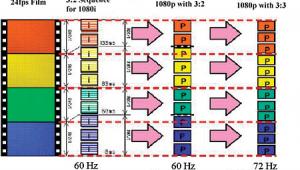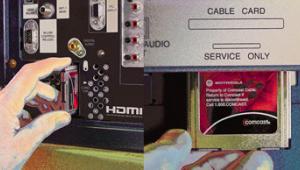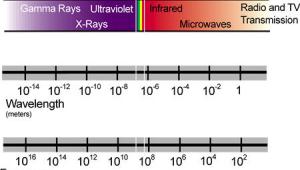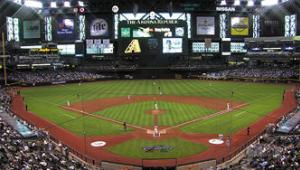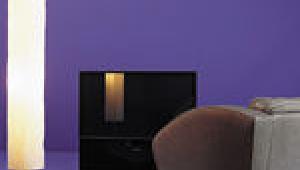Your Digital TV To-Do List Page 3
As you scan through the tables, you’ll find that the majority of TV stations (over 1,320, by my most recent count) are going to stay put in the UHF TV spectrum. But quite a few of them will have to switch their UHF broadcast channel as the digital TV channel core shrinks to channels 2 through 51.
The FCC data shows that 40 TV stations are either currently operating on or getting ready to light up VHF channels 2 through 6. That’s the least desirable part of the TV spectrum, as those channels are very susceptible to impulse and man-made noise, not to mention interference from distant signals that skip across the country during the summer months.
And the rest of the TV stations? 452 of them are already broadcasting on high-band VHF channels (7 through 13) or moving there by February 17. Your UHF antenna system won’t receive either group of channels very well, unless you live very close to the TV transmitters. In this case, an indoor pair of rabbit ears will work nicely.
No matter what, you’ll need to re-scan the channels on every digital TV or set-top box you own on February 18, just to make sure you’ve found all of your local stations again. Hey, no one said this would be easy!
Request Your Converter Box Coupons
You might as well get your two free $40 chits from Uncle Sam while they last. You can apply one each against the cost of a digital TV converter box for those second and third TVs in your home or at your vacation cottage.
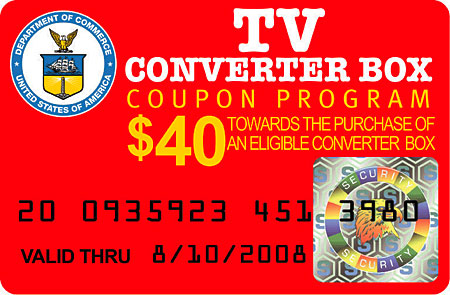
Apply for your coupons online at www.dtv2009.gov, where you’ll find these National Telecommunications and Information Administration (NTIA) press release tidbits:
While you’re at it, check TV Fool to see if you have any low-power or translator TV stations in your reception area. These stations are not required to go digital yet, which means you should choose a converter box that offers analog TV signal passthrough. Many of the first converter boxes to market did not support this function, but as of this writing, almost half of available models do. This way, you can have your DTV and analog, too.
Note that these low-cost converter boxes do not provide HDTV connections. All you’ll see is standard-definition versions of whatever programs you happen to tune in to. For true HD viewing, you’ll need to buy a new TV or, if your older TV has component video connections, pick up an external digital TV set-top box. Very few manufacturers make these anymore, but there are a couple of models available for less than $200. You can also get them through your cable and satellite provider as well.
Get Your Antenna Work Done Now
If you live in a market where some of the stations are moving to VHF channels from UHF, you can still set up your antenna in advance by adjusting its position for the strongest and cleanest analog TV images on those channels.
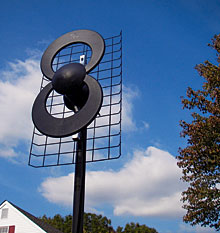 You should also check out and replace your old antenna lead-ins, particularly if your antenna is really old and uses 300-ohm twin-lead wire. You don’t need to spend an arm and a leg on new coaxial cable—just go with a reputable brand and install new connectors and waterproofing boots if outdoors.
You should also check out and replace your old antenna lead-ins, particularly if your antenna is really old and uses 300-ohm twin-lead wire. You don’t need to spend an arm and a leg on new coaxial cable—just go with a reputable brand and install new connectors and waterproofing boots if outdoors.
While you’re at it, make sure your outside antenna is well grounded, preferably to a cold-water pipe to a 6- or 8-foot-long ground rod. You can find these at hardware stores, and they’re not very expensive. You’ll need to hammer the rod as far into the ground as possible to provide both an electrical ground for your antenna and protection against nearby lighting hits.
For indoor antennas, you may be able to get away with a simple pair of rabbit ears, particularly in urban areas. I’ve tested several indoor VHF/UHF antennas, priced affordably from $15 to $30. These worked just fine for indoor reception about ten miles away from a TV antenna farm. The test receiver used fifth-generation ATSC technology, which most converter boxes and new TVs have now surpassed.
Use the same tricks as you would for a roof-top installation. Align the antenna elements for the best reception on all possible channels. Your set-top box, converter, or digital TV wants plenty of signal, and it will take care of multipath, ghosting, and echoes accordingly.
Update Your In-Home Rf Distribution System
If you feel up to the job, you can take your rooftop or attic antenna feed and split it up to two or more TVs in your house. You may need to install a preamplifier at the antenna to provide a strong enough signal to all of your TVs through a splitter, depending on how many are connected directly or through converter boxes.
If you already have cable running through the house, make sure it’s at least RG-6/U size coax, and not RG-59/U. While the latter (and smaller) size cable will work, it has more signal attenuation per foot. If you plan on splitting the feed from your master antenna a few ways, you could run out of signal in a hurry.
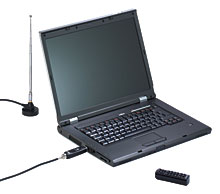 Equip Your Pc With A Digital Tv Tuner
Equip Your Pc With A Digital Tv Tuner
Hey, why not? Numerous companies manufacture standalone or plug-in digital TV tuner cards, boxes, and USB sticks that don’t cost very much and let you add more DTV reception capability to your house. Even better, you can use the accompanying software to schedule and record your favorite TV shows to your computer’s hard drive. You can even do this on the road using your time-tested notebook PC. Models start at $100.
Check Your Cable Channels For In The Clear Local Stations
Are you a basic (analog) cable subscriber? Many cable TV systems carry local digital TV stations without encryption. Any TV built in the last two years that is equipped with a digital TV tuner can also receive these stations. If you just purchased a new set and have cable service, give it a whirl and scan for those channels.
Depending on your cable service provider, you may see the DTV station’s virtual channel information and call sign appear—or you may not. If so, you’ll have at least a few local TV stations that you can receive without a cable box. If your TV is a new flat-screen type, you’ll also be able to watch HDTV for free.
That doesn’t mean you should dismiss adding an antenna. Here’s why: Some cable systems massage the bit rate for HDTV programs that they retransmit from local TV stations. If you can watch the broadcast directly from the station, then you’re going to see the program in the highest possible quality, short of taking a direct digital network feed from their satellite at 40-plus Mbps!
Now, there’s a list that should keep you busy for a few weeks. It may seem like a lot of work, but remember, digital terrestrial television is one of the few really good deals left in life. It won’t cost you a dime beyond your initial expenses for antennas, coaxial cable, etc., and you’ll enjoy hours of high-quality standard-and high-definition prime-time shows, sports, news, and other programming—all for free.
After all, as a great philosopher once said, “If it’s for free, it’s for me!”


